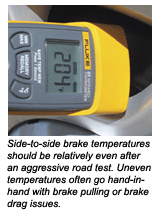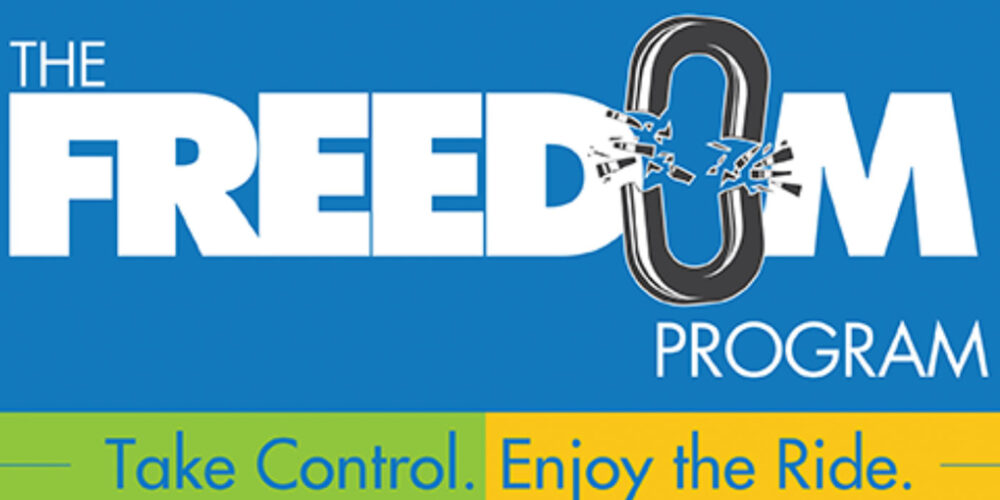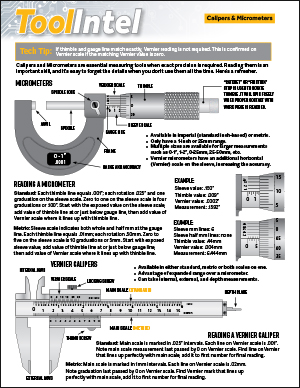” height=”234″ alt=”” border=”0″ align=”right” /> Although brake systems wear at a relatively glacial rate, a point will be reached when they can no longer stop the vehicle in an emergency situation and brake system inspections are therefore required to prevent accidents caused by brake component failure. Inspection procedures vary from area to area. Mountainous or metro-area driving conditions, for example, obviously demand more brake performance than do plains-area conditions.
INSPECTION STANDARDS
States requiring periodic safety inspections may set their own inspection standards. Auto manufacturers include brake inspection intervals in their scheduled maintenances, and independent organizations such as the Motorist’s Assurance Program (MAP) provide guidelines that are used by most reputable shops to recommend brake services and repairs. Whatever the method used to assess brake condition, the standards should be uniformly applied to all situations.
BRAKE LINING INSPECTION
Some of the most profitable shops use a vehicle maintenance checklist to ensure that the brake linings are inspected during each vehicle visit. Considering that most imports are equipped with alloy wheels, it’s easy to inspect brake pads without removing the wheel. To avoid an optical illusion created by a brightly polished brake rotor, insert a small, pencil-tipped flashlight or stem light between the pad and rotor to illuminate the thickness of the remaining pad material. The inspection light can also be used to illuminate the proximity of the pad warning tabs to the brake rotor. If the warning tabs are touching the rotor, pad replacement is required.
Many imports equipped with rear drum brakes allow the technician to inspect the brake linings by removing a rubber plug from front and rear inspection holes located in the rear brake shoe backing plates. All measurements should be compared with official minimum lining thickness specifications to determine if the linings should be replaced. If excessive lining wear or other defects are suspected, permission should be gained from the customer to remove the wheels for a more thorough inspection of the brake system.
INSPECTING BRAKE HYDRAULICS
The first step in checking brake hydraulics is to inspect the fluid level in the master cylinder reservoir. Although many imports incorporate a float mechanism or sensor in the reservoir that turns on a red “Brake” and/or orange “ABS” warning light on the instrument panel when the brake fluid level falls to a dangerous level, never assume that the fluid level sensor is a fail-safe mechanism.
Because disc brakes use brake fluid to compensate for lining wear at the brake caliper, a low reservoir fluid level may indicate worn brake pads. The level will also appear low if the system is leaking brake fluid. Fluid leaking from calipers and hoses will appear wet. Fluid leaking from brake drum wheel cylinders or oil from leaking axle seals will accumulate around the circumference of the brake drum. Brake fluid that “mysteriously” disappears at regular intervals is usually being drawn from the rear seal of the master cylinder into the power brake vacuum booster and may be consumed by the engine.
Examining brake fluid condition is a critical part of today’s brake hydraulics inspection. Well-maintained brake fluid should be clear with no residue coating the inside of the master cylinder reservoir. Because DOT 3 brake fluid commonly used in ABS systems is hygroscopic, the fluid actually draws atmospheric moisture through rubber seals and hoses. Brake manufacturers recommend that the brake fluid be tested for moisture by using test strips to detect the presence of water. Many import manufacturers recommend flushing the brake hydraulic system every two years with fresh fluid to prevent corrosion in expensive hydraulic and anti-lock brake system components.
Although fluid color certainly isn’t a final determinant of fluid condition, dark brown or blackened fluid generally indicates that the system needs to be flushed. Rusty-colored fluid indicates that the fluid is contaminated with water. If the rubber-sealing gasket on the reservoir is unusually wrinkled or swollen, the fluid is contaminated with a petroleum-based solvent or oil. Because petroleum-based products attack the natural rubber used in brake hydraulics, it’s important for safety’s sake that rubber parts of the brake hydraulic system be replaced immediately before they cause an accident.
 BRAKE PERFORMANCE TESTING
BRAKE PERFORMANCE TESTING
Because customers often postpone brake service until the system completely fails, road testing for brake performance should be approached with caution. Always, for example, inspect the brake fluid level before driving. After starting the engine, all orange ABS and red brake service or park brake warning lights should go out. A vacuum-boosted power brake system should pull the brake pedal down slightly as the engine is started. Conversely, hydraulically boosted systems will raise the pedal slightly as the engine starts. In either case, hold foot pressure on the pedal for at least 30 seconds to make sure that the hydraulic system is capable of holding application pressure. If the pedal sinks, the master cylinder is leaking internally or the system itself has developed an external leak. Because some vehicles might use the parking brake to adjust one axle set of service brakes, always test the parking brake for travel and engagement before driving.
High vehicle speeds will intensify brake performance problems, so it’s important to apply the brakes at low speeds to reveal any tendencies of the brakes to pull or pulsate. Keep in mind that many brake-pulling complaints can be caused by mismatched tires and rims, under-inflated tires, worn suspension mountings or worn steering linkage. In other cases, a large positive-to-negative caster or camber variation from side-to-side may cause the front brakes to pull. Excessive negative toe angle might cause the vehicle to dodge when the brakes are applied. Although it’s relatively rare, remember that bent wheel rims and defective tire casings can cause a brake pulsation similar to that of a warped brake rotor.
If the situation allows, test the anti-lock brakes by suddenly applying the brakes on a sandy road surface at 10-15 mph. The ABS pump motor should activate and the pedal should pulsate as the ABS system manipulates hydraulic pressures at all four wheels. The vehicle should stop in a straight line without brake pull or wheel lock-up. Remember that ABS is designed to allow the driver to steer the vehicle in an emergency situation by preventing wheel lockup. If the service brakes aren’t responsive, inspect the brake linings for fluid contamination or inferior materials.
INFRARED TESTING OF BRAKE HYDRAULICS
All shops occasionally have a problem with uneven side-to-side pad wear or an intermittent brake pull. In many cases, the problem can be detected by using an infrared pyrometer or “heat gun” to test relative brake temperatures. To perform this test, apply the brakes at 30-50 mph at least a half-dozen times. After parking in a safe area, check the temperature of the brake rotors and drums with the infrared temperature tester to see if each axle set displays essentially equal temperature readings. Obviously, if the side-to-side axle set temperature readings differ by at least 20%, then a problem exists with the brake hydraulics or brake linings.
In some rare cases, the brake hose might be collapsing internally, which causes an intermittent brake pull or brake drag. In other cases, different types or grades of linings might have been installed on each wheel of the axle set. In the case of older imports with diagonal brake systems, a worn or defective master cylinder might be at fault. Whatever the case, routinely checking brake temperatures with an accurate, spot- metering infrared temperature tester after road testing can yield valuable diagnostic data.
|
Brake Service Trends
New rotors versus old rotors: To conserve weight, modern brake rotors are built with very little machineable stock. In general, a brake rotor needs at least 0.030” of removable stock per side to qualify for resurfacing. Due to the competitive price of new rotors, many shops are finding it more cost-effective to replace than to resurface. On-car versus off-vehicle resurfacing: While off-vehicle resurfacing has its place, newer versions of on-vehicle rotor resurfacing equipment have become more accurate and easier to use. Assuming the wheel bearings are in good condition, on-car resurfacing eliminates variables like bearing hub and lathe spindle run-out. Set-up times have been reduced to a minimum and the process is, at the least, as cost-effective as off-vehicle resurfacing. Ceramic versus semi-metallic linings: On modern imports, ceramic linings are generally designed to reduce brake noise and dust, while semi-metallic linings are generally designed to endure high temperatures caused by heavy braking. Semi-metallic linings, for example, are better suited for light trucks used for towing. Ceramics are, in many cases, better suited for passenger car use. When in doubt, follow the OEM and the brake lining manufacturers’ replacement recommendations. Flushing versus not flushing: Because it’s a so-called “quick-money” service, fluid flushing has generally tended to be over-sold in some markets. Nevertheless, many import auto manufacturers recommend flushing the brake fluid at two-year intervals to prevent corrosion in the brake hydraulic and anti-lock systems. The brake hydraulic system should always be flushed when performing a hydraulic component or brake lining replacement. In most cases, flushing the old fluid from the system will produce a higher, more responsive brake pedal. |












